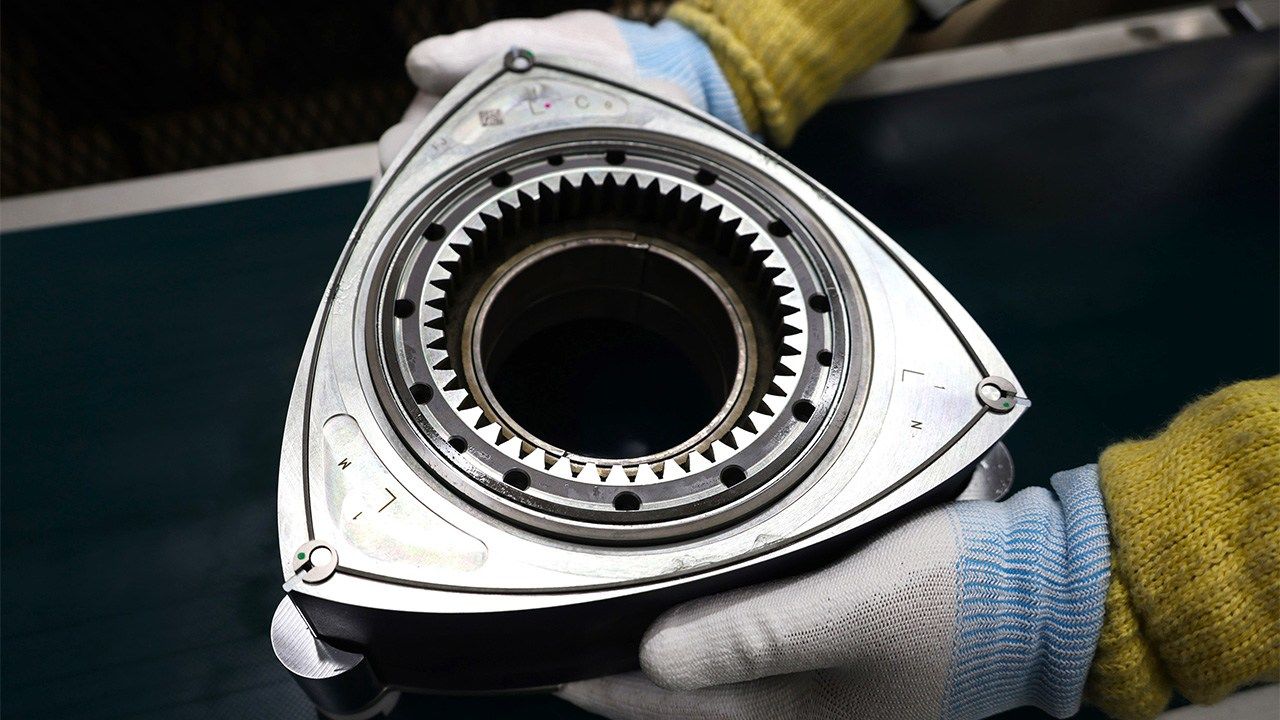
Keeping Rotary Alive: Mazda’s Rotary Engine in the Age of the Electric Car
Economy Technology Science- English
- 日本語
- 简体字
- 繁體字
- Français
- Español
- العربية
- Русский
Rotary Engine Makes Hybrid Debut
Mazda recently released a vehicle powered by a rotary engine, its first since the discontinuation of the RX-8 in 2012.
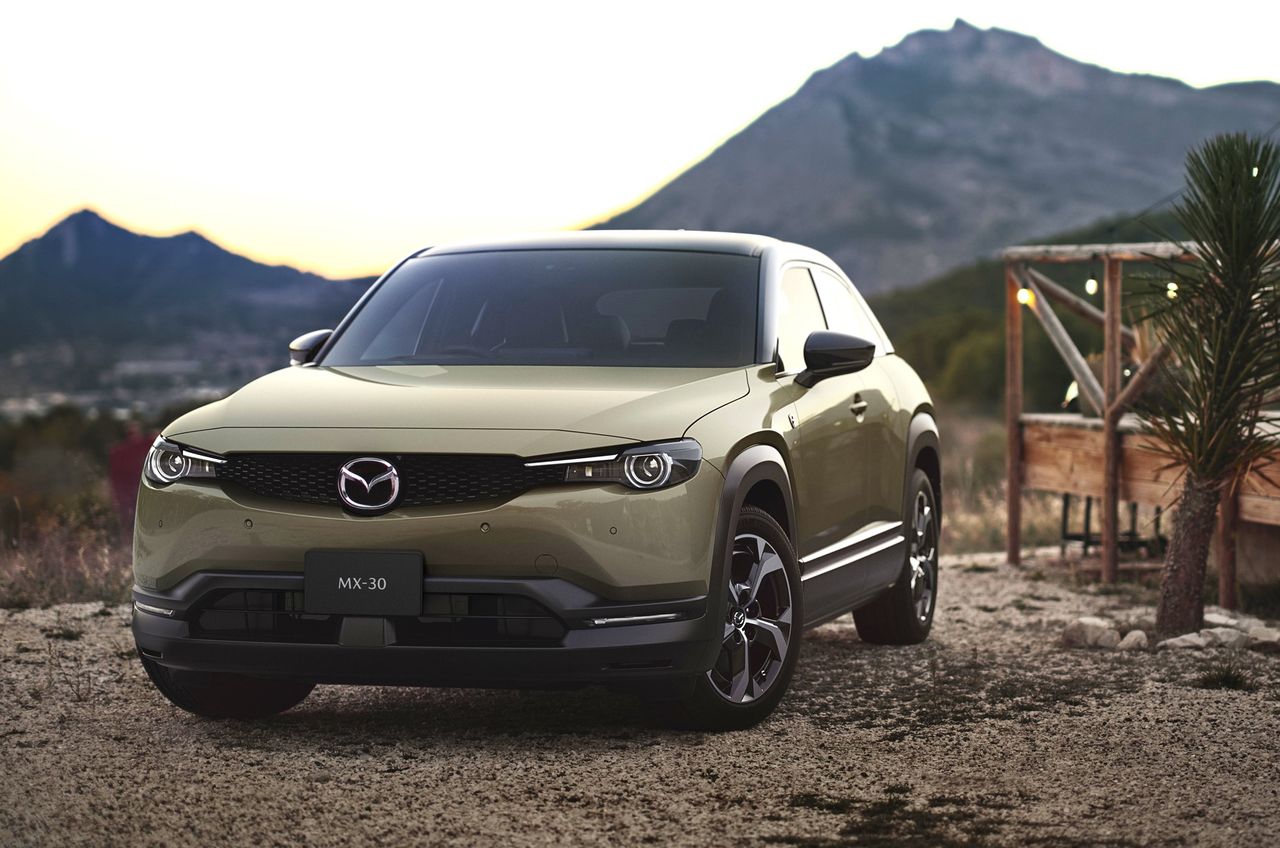
The MX-30 e-Skyactiv R-EV, released in November 2023. (© Mazda)
Rather than using its rotary engine to power the vehicle directly, the MX-30 R-EV uses the engine to drive a generator. The electricity produced is then used to power an electric motor, in a configuration generally referred to as a “series hybrid” or “extended range electric vehicle.” Examples of this that are already in production include the Nissan e-Power range and the Honda e:HEV. (In the Honda vehicle, the engine can also be made to drive the wheels directly.)
What makes the MX-30 R-EV different, however, is that unlike the e-Power and e:HEV, it does not contain a reciprocating engine (one that relies on the back and forth motion of pistons to generate power), and rather features a Wankel rotary engine that develops power by spinning a triangular rotor. As a plug-in hybrid with a large battery, the MX-30 R-EV can also be used like a pure electric vehicle.
There is a reason that Mazda selected the technologically challenging series plug-in hybrid configuration for the MX-30 R-EV: Rotary engines are disadvantaged by their higher fuel consumption and hydrocarbon emissions, and it is believed that, amid an unprecedented focus on environmental issues, these drawbacks sealed the fate of the technology, and were the reason that Mazda decided in 2011 to stop producing rotary vehicles.
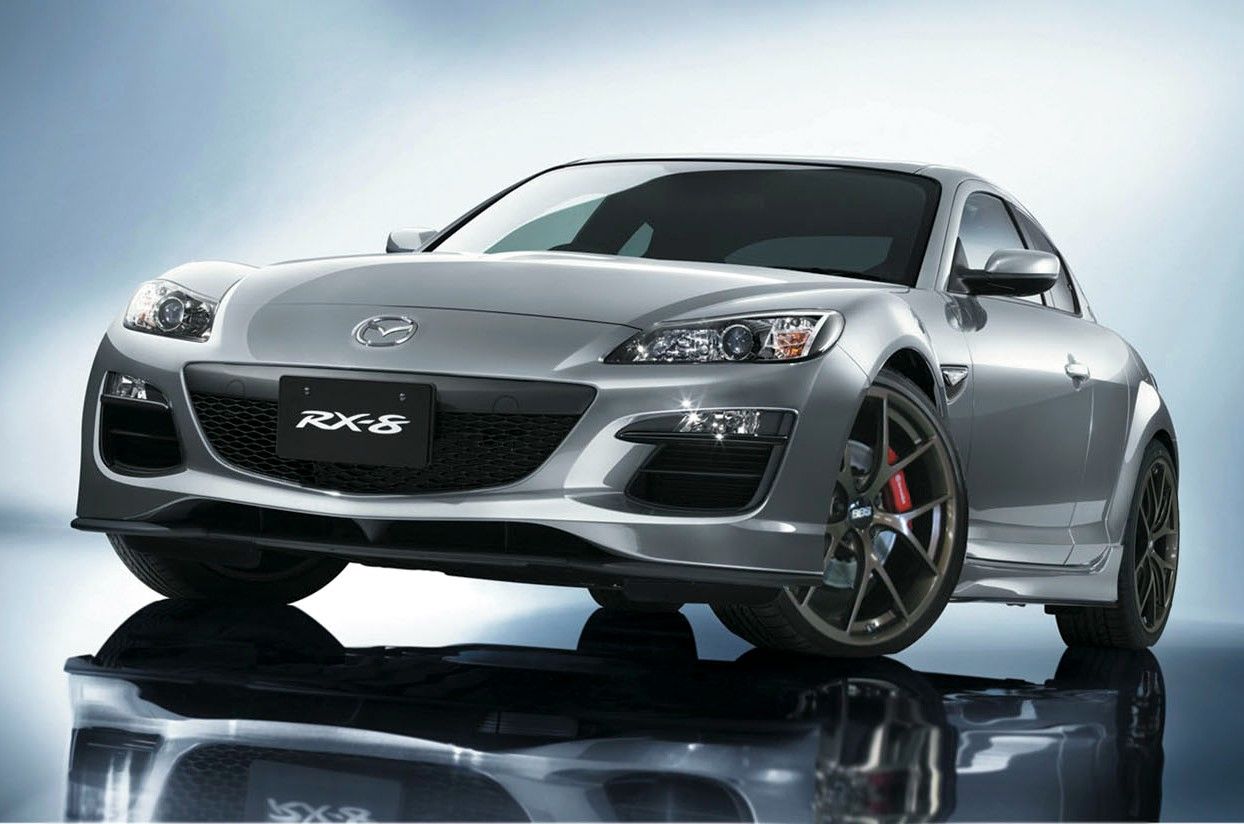
In 2013, Mazda discontinued the RX-8, making it the last ever sports car to feature a rotary engine. (© Mazda)
Mazda addressed the engine’s fuel efficiency and emissions challenges by combining it with a series plug-in hybrid powertrain. At last, the car was ready for commercial release. But just why was Mazda so committed to bringing back rotary tech?
Teething Troubles
It was 1967 in which Mazda first mass-produced the rotary engine—once dubbed the “engine of the future.” The Cosmo Sport released that year was the second ever mass-produced rotary engine vehicle, the first being the NSU Spider, released in 1964 by the German manufacturer NSU.
Under a technological agreement signed in 1961, Mazda acquired the underlying technologies developed by NSU, which was at the time a leader in rotary engine technology. Unlike NSU, however, which quickly abandoned mass production of the engines after a string of problems, Mazda overcame many difficulties and went onto supply the world with rotary engine vehicles for nearly half a century. What’s more, NSU and Mazda are the only manufacturers ever to have mass-produced rotary engine vehicles, effectively meaning that Mazda is the only automotive manufacturer to have successfully commercialized the rotary engine.
While the rotary engines produced by NSU are generally referred to as “Wankel engines,” after their inventor, in this article I will use the term “rotary engine,” which is preferred by Mazda.
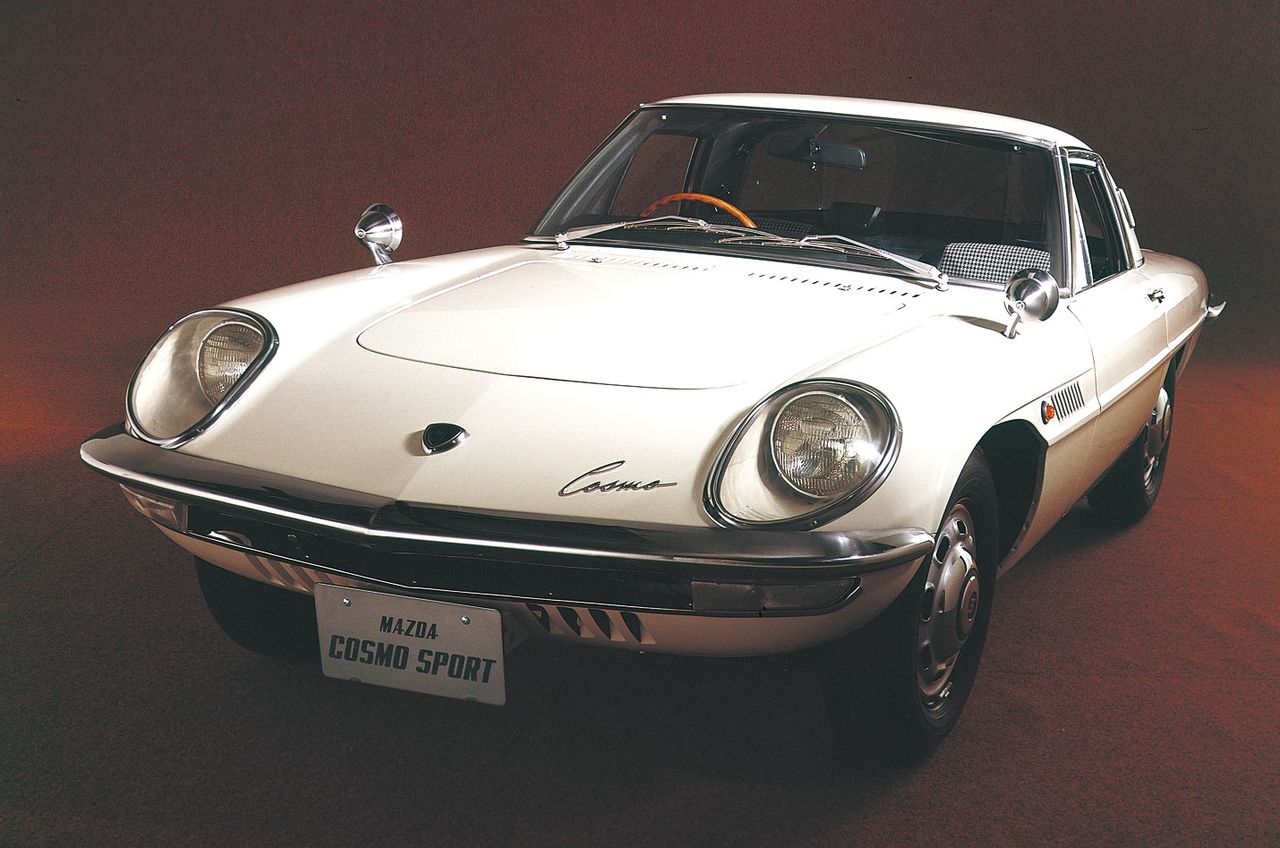
The 1967 Cosmo Sport’s futuristic design saw the car featured in Return of Ultraman. (© Mazda)
Let us look at the challenges Mazda had to overcome in the course of commercializing the rotary engine. Initially, the most serious issue was chatter marks: ripples, or wear, that arise on the interior of the rotor housing (the rotary engine’s answer to cylinders) over time. To overcome this problem, Mazda came up with the idea of fabricating the apex seals for the combustion chamber from self-lubricating, carbon-based materials, developing new lubrication techniques in cooperation with manufacturers, and applying hard chrome electroplating to the interior of the rotor housing. To discover the cause of the internal vibration responsible for the chatter marks, Mazda was also an early adopter of computerized analysis in 1963.
In this way, Mazda acquired diverse expertise on materials, surface treatments, vibration analysis, and combustion analysis, thereby laying the foundations for its world-class engine technology. In addition to enabling Mazda to hone its technical prowess, though, the rotary engine also played an important role in allowing the manufacturer to blossom into the all-round vehicle maker that it is today.
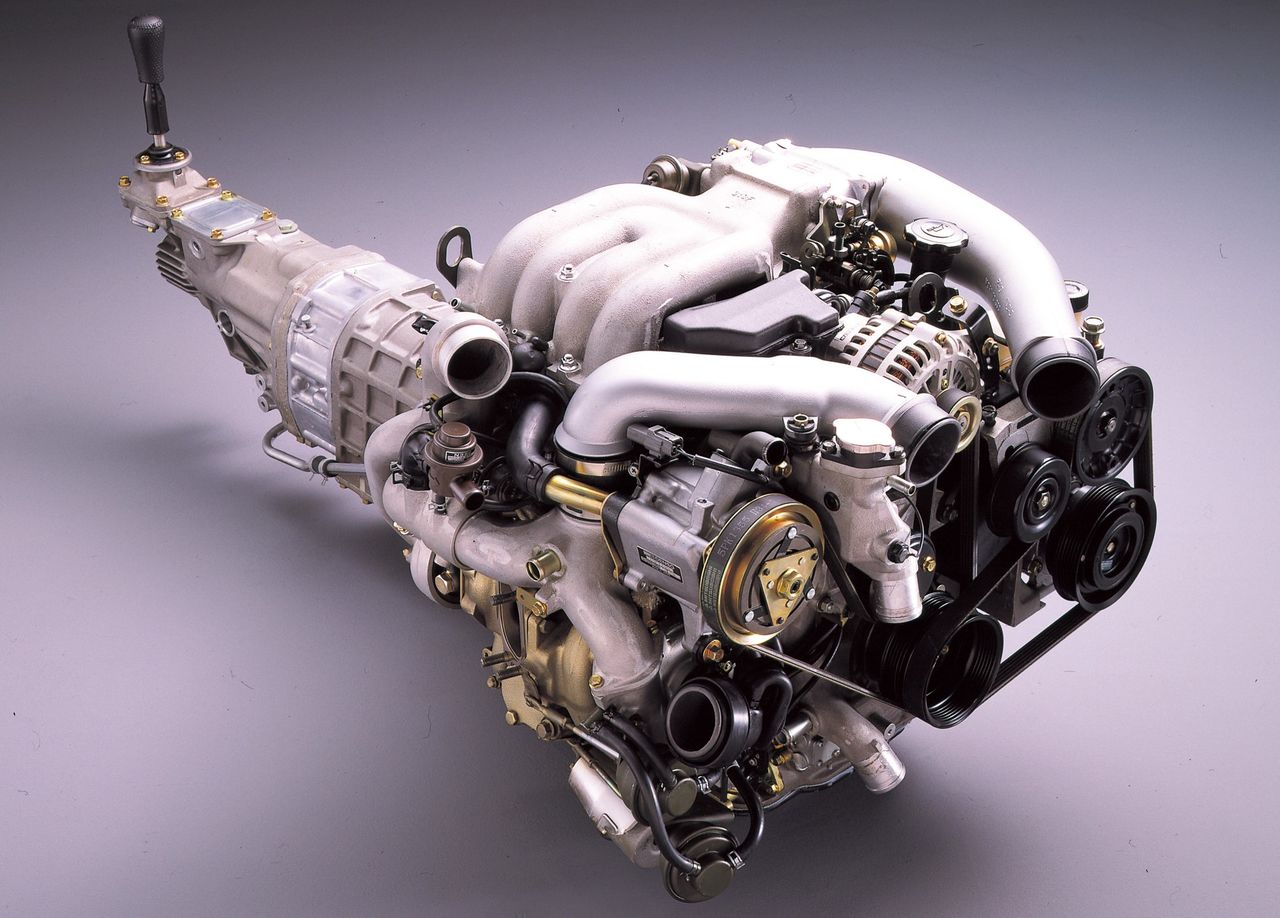
The rotary engine in the 1991 RX-7 featured twin turbo charging, which enabled its output of around 250 horsepower from a compact package. (© Mazda)
In the early 1960s, the Japanese government attempted to consolidate the auto industry into three main groups: a mass-production group, a sporting/luxury group, and a light vehicle group. Mazda (known at the time as Tōyōkōgyō), which entered the car market in 1960 with the release of its light vehicle range, would have been incorporated into the light vehicle group, but that idea didn’t sit well with Mazda’s engineers, who already had dreams of turning Mazda into an all-round car manufacturer. To show the company had the potential to cover all the bases, Mazda’s engineers attempted to commercialize Mazda’s proprietary, advanced technologies, and chose the rotary engine as a prime example.
While the subsequent rapid growth of Japan’s auto sector caused the government to defer its plan to restructure the industry, the rotary engine played an important role, not only technologically, but also in the course of growing Mazda as an automotive manufacturer.
Efficiency Woes
Back to the MX-30 R-EV. As part of its revival of the rotary engine for this 2023 offering, Mazda not only combined the engine with a series plug-in hybrid powertrain, but extensively redesigned the engine in an effort to improve fuel efficiency and environmental performance. In addition to boosting efficiency with a direct injection system, using this feature to more precisely deliver fuel, thereby reducing fuel consumption while the engine is still cold, Mazda also significantly redesigned the interior of the combustion chamber to enable faster combustion, thereby creating additional efficiencies. Mazda also shaved 15 kilograms off the engine’s weight by fabricating the side housing from aluminum, and improved durability by thermally spraying the interior of the engine with a ceramic coating.
The redesigned rotary engine, dubbed the “8C,” is a tour de force, and features (to borrow reciprocating engine terminology for a moment) a cylinder block, cylinder head, and piston that have effectively been completely redesigned: you could almost call it a clean-sheet, total redesign of the engine.
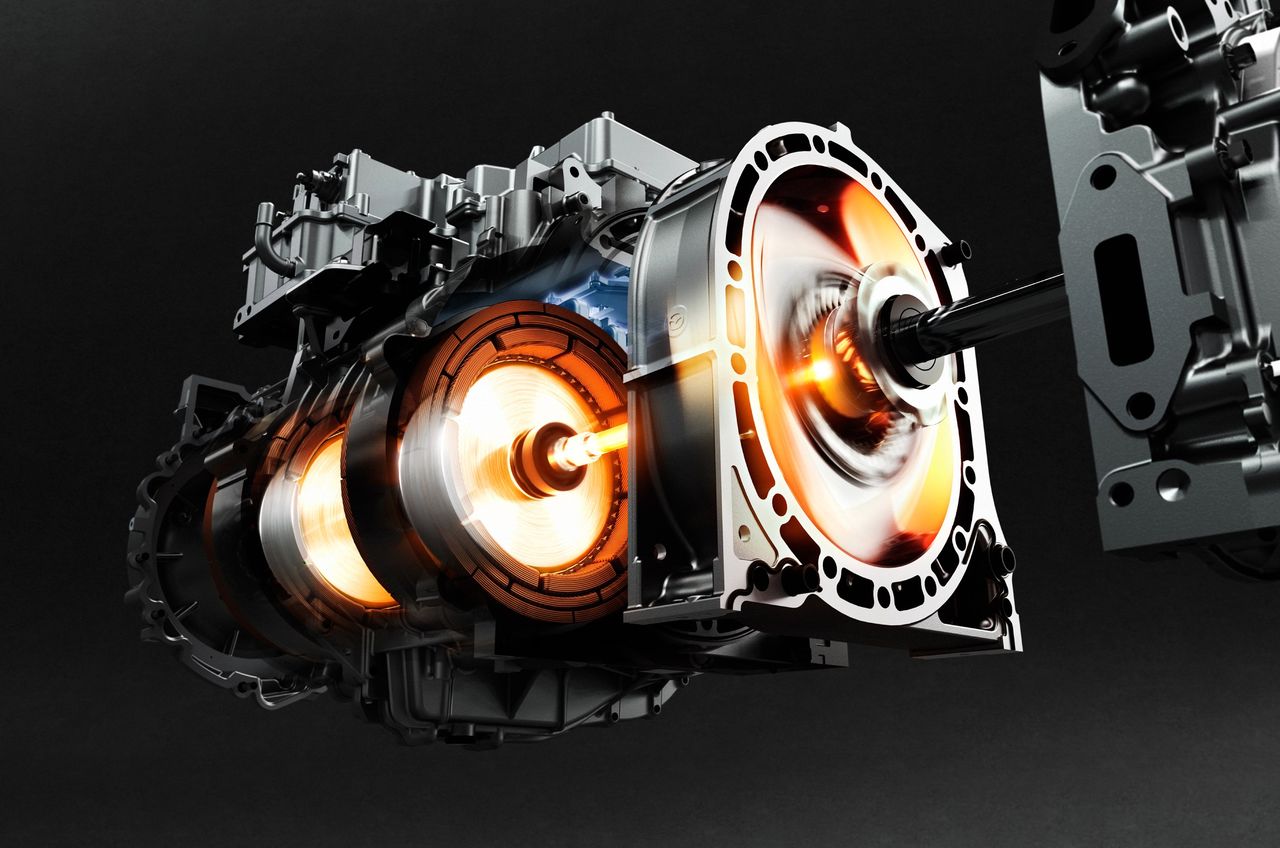
In the MX-30 e-Skyactiv R-EV’s electric propulsion unit, the already compact rotary engine shares a common axle with the generator and motor. (© Mazda)
Despite all this, though, the MX-30 R-EV still falls somewhat short, with a catalog fuel efficiency of 15.4 kilometers per liter (as measured in WLTC mode). With no similar vehicles on the market, like-for-like comparison is not possible, although the Toyota RAV4 plug-in hybrid gets 22.2 km/l, while the Prius plug-in hybrid gets 26.0 km/l. The MX-30 R-EV is clearly inferior in terms of its fuel economy.
It follows that the future of the rotary engine is still not assured. even when combined with a plug-in hybrid powertrain. Mazda is therefore trying to keep the engine current by making its offering more marketable—not only improving fuel efficiency but also making the car look and drive like a Mazda. This is because the rotary engine is at the heart of Mazda’s identity.
When unveiling its “Iconic SP” concept car at the autumn 2023 Japan Mobility Show, Mazda showcased the rotary engine’s potential with an elegant sports car body containing a twin-rotor engine, representing an evolution of the MX-30 R-EV’s single-rotor model. When announcing the MX-30 R-EV, Mazda pledged not to let rotary die. Let’s hope this pledge holds true.
(Originally published in Japanese. Banner photo: The triangular rotor that exemplifies the MX-30 e-Skyactiv R-EV’s Wankel engine rotates within a cocoon-shaped housing, producing power by repeatedly performing compression, ignition, and exhaust cycles. © Mazda.)